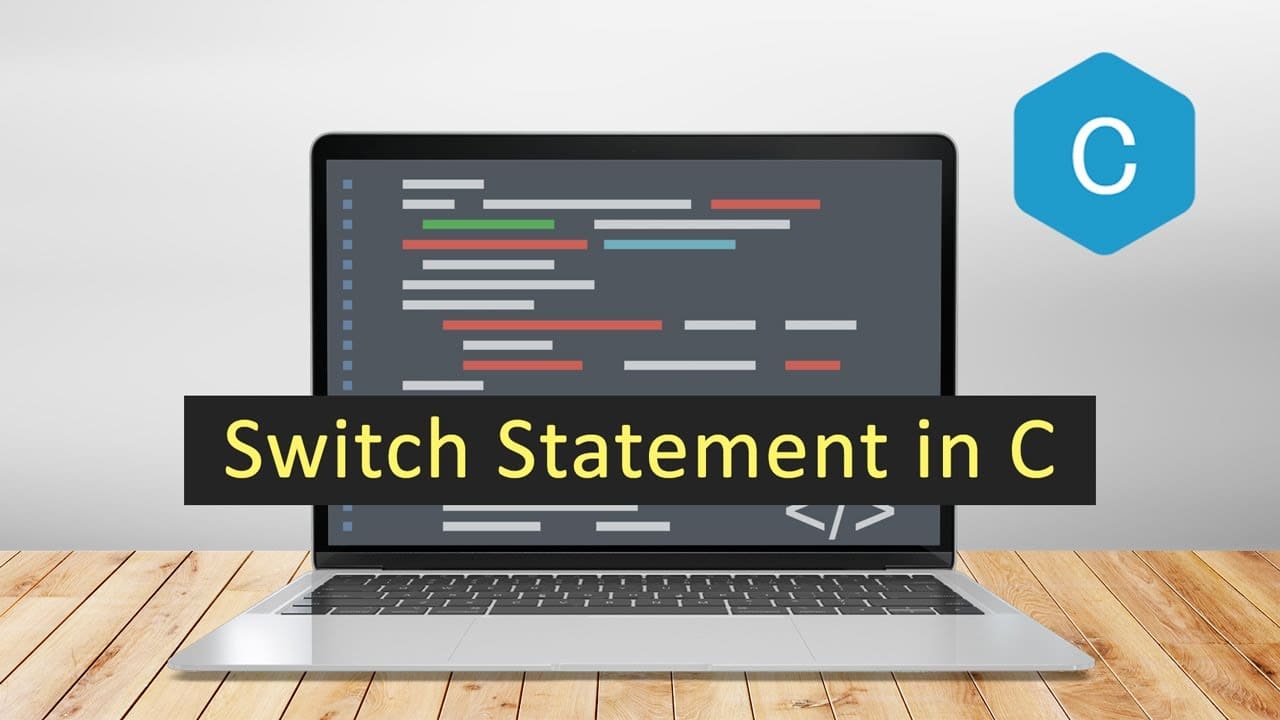Switch Case Statement in C with Examples
Mr. Bambam Kumar Yadav/ 3 days ago - 15
- 11 min read

Understanding the Power of Switch Case
The switch case statement is a nice, neat alternative to long if-else chains when you're comparing a variable to a bunch of constant values. Unlike those messy if-else statements that just keep going and going, switch case usually runs better and keeps your code cleaner, especially when you have lots of conditions.
Basically, when you write a switch case statement, you're making a multi-way choice. Your program can run different bits of code based on what a single expression spits out. This is super helpful when you need to deal with a bunch of different values, or when you're making user interfaces that react to different things people do.
Students in programming courses, like Uncodemy's C programming course, often find that getting good at switch case statements early on helps them write code that's easier to manage and runs more smoothly. These statements are key for making good programs that handle what users do without any trouble.
The Anatomy of Switch Case Statements
Okay, so a switch case statement is made up of a few things that team up to make a really useful control structure. You kick it off with the `switch` keyword, and then put an expression in parentheses, that expression decides which `case` will run.
Each `case` is like a possible value that the `switch` expression might hit. If the program finds a `case` that matches, it runs that code. The `break` statement at the end of each `case` is important; it stops the program from just continuing down to the next `case`. This makes sure only the code you want actually runs.
The `default` case is like your if all else fails option. If none of the other `case’s’ match the `switch` expression, the `default` `case` runs. It's not required, but it's a good idea to include it. It helps you handle any weird or unexpected values and makes your overall program better.
It's really important to get how these parts work if you want to write good switch case statements. This setup gives you flexibility and control. You can handle pretty tricky decision-making situations with code that's easy to read and understand.
When to Choose Switch Case Over If-Else
Choosing between switch case and if-else depends on a few things: what you're checking, how fast it needs to be, and how easy it is to read. Switch case is great when you're comparing one thing against a bunch of fixed values.
For speed, a switch case can be faster than a bunch of if-else statements. The computer can make switch statements run faster, especially if there are many options.
Switch case makes code easier to read when you have many separate values to check. You can see all the options at once. If-else chains can get confusing when they get long.
But switch case can't do everything if-else can. Switch can only compare against values that are known when the code is written. If-else can check more complex things. Knowing these differences will help you pick the right one.
Building Menu-Driven Programs
Switch case statements? They're super useful for making menus where users pick what they want to do.
Basically, the program lists options, folks choose a number, and the switch case figures out what to do based on that pick. It's a basic thing in simple apps, little computer systems, and even when making stuff people see on a screen.
Switch case is great for menus since each choice is just a case. Makes the code easy to read since it's set up just like the menu the user sees.
Folks learning to code often begin with these simple menu programs to get how switch case works before moving on to harder stuff. It assists in building confidence when learning how programs work.
Handling Character Input with Switch Case
Switch statements are also super useful when working with character inputs. Think about handling keyboard stuff, reading text files, or even building command interpreters. They make it easy to decide what to do based on characters.
Like, in interactive programs, users hit keys to do stuff, right? A switch statement can quickly figure out what to do based on which key was pressed.
It's cool that you can handle both uppercase and lowercase letters without a lot of extra code. You can have different cases that all do the same thing, which keeps things simple.
Also, dealing with errors is easy. You can use the default case to catch any weird characters people type in, which helps keep your program from crashing.
Implementing Calculators and Mathematical Operations
Switch statements are great for calculator apps! Different operators need different math, and each operator can be a case. The code then does the right calculation.
Calculator programs show how clean switch case can be. Picking an operation fits naturally with the case making the code easy to read and understand. That's super helpful when fixing bugs or changing the calculator.
Handling math operations is where switch case helps. A single switch statement can handle all operators, which is better than a bunch of if-else statements. It makes things faster and easier to read.
For fancy stuff like scientific functions or unit changes, you can use switch statements inside switch statements, or have several working together. This keeps the code organized while adding features.
Common Pitfalls and How to Avoid Them
Coders often mess up switch case statements in a few common ways. Knowing these mistakes can help you write code that's easier to rely on and keep up.
One really common mistake is forgetting to put in break statements. If you forget those, the code will just keep running through the other cases, which you probably don't want. This can cause weird bugs that are a pain to find, especially if your program is complicated.
Another issue is using the wrong data types. The thing you're switching on and the case labels should be the same kind of thing, like numbers or letters. If you mix them up, you might get errors or the code might act strangely.
Sometimes, code gets skipped over. This happens if you have two of the exact same case labels or if you put the default case in the wrong spot. The compiler will usually tell you about these things, but it's good to understand why they happen so you can avoid them.
How you order your case labels can change how fast your program runs, too. Usually, the compiler does a good job no matter what, but putting the cases you use most often at the top can make things a little quicker if speed really matters.
Advanced Switch Case Techniques
Beyond the basics, some cool tricks can make your programs work better and faster. These are super handy for tricky apps and system stuff.
Sometimes, letting code fall through from one case to the next can be useful. If you skip the break command on the objective, you can handle similar cases with the same code.
You can also nest switch statements to handle categories and subcategories. It keeps things tidy when you have a ton of options.
To make your switch statements run faster, think about how compilers turn your code into machine code. This is great when you have lots of cases.
Lastly, preprocessor macros can help you reuse switch case patterns or simplify complicated setups. Just be careful to keep your code readable and easy to debug!
Mastering the Art of Elegant Control Flow
Switch statements in C are a neat way to control how your program flows. They keep things clean and readable when you have lots of conditions to check, which is super useful for writing programs that are easy to keep up and run well.
Getting good at switch statements takes time. You gotta practice, mess around with them, and see how they work in actual projects. Every time you write code with switch statements, you get a better grip on how to use them to fix tricky problems.
Keep in mind that switch statements are just one part of programming. The trick is knowing when to use them. They're great when you need to handle many conditions in a way that's easy to follow and fast.
What you learn about switch statements will be helpful down the road, no matter what kind of programming you're doing. The ideas behind keeping your code organized, making it run fast, and handling errors well are important everywhere.
No matter how you're learning—on your own, online, or in a class—getting a good base with switch statements will help you grow as a programmer. It'll give you the confidence to take on bigger and tougher coding tasks.
Frequently Asked Questions (FAQs)
When should I use switch case instead of if-else statements?
Use switch case when comparing a single variable against multiple constant values. Switch case provides better performance and cleaner code structure for discrete value comparisons, while if-else is better for complex conditions and ranges.
What happens if I forget to include break statements in my switch case?
Without break statements, your program will experience fall-through behavior, executing multiple cases consecutively. This usually causes unexpected behavior and bugs, though intentional fall-through can be useful in specific scenarios.
Can I use strings or floating-point numbers in switch case statements?
No, switch case statements in C only work with integer types and characters. For strings or floating-point comparisons, you must use if-else statements or convert your data to integer representations.
Is the default case mandatory in switch statements?
The default case is optional, but it's considered good practice to include it. The default case handles unexpected values gracefully and makes your programs more robust and user-friendly.
How does switch case performance compare to if-else chains?
Switch case statements often provide better performance than if-else chains, especially with many conditions. Compilers can optimize switch statements using jump tables or binary search techniques for faster execution.
Can I use variables as case labels in switch statements?
No, case labels must be compile-time constants. You cannot use variables, function calls, or expressions that aren't constant. This limitation is what allows compilers to optimize switch statements effectively.


























